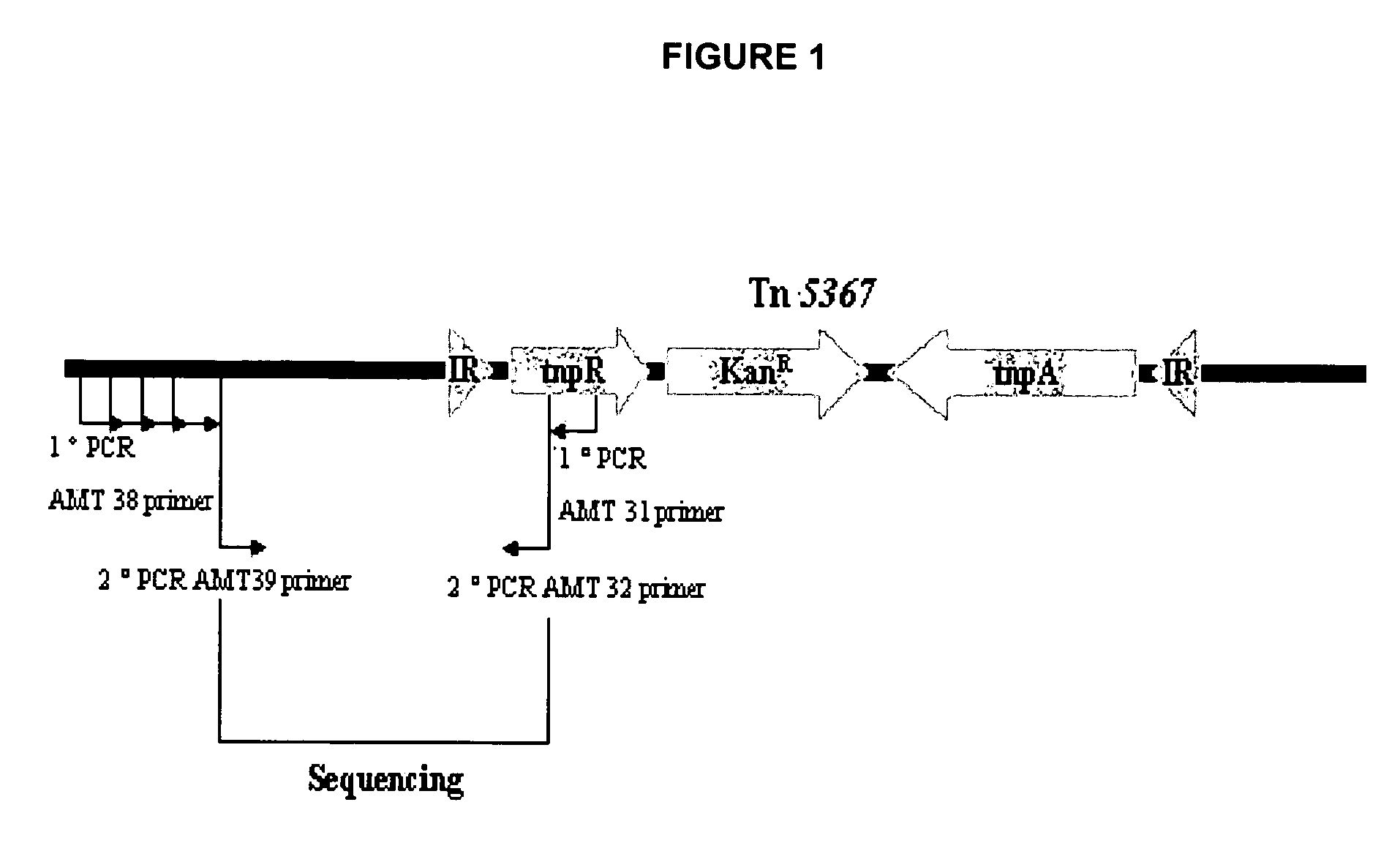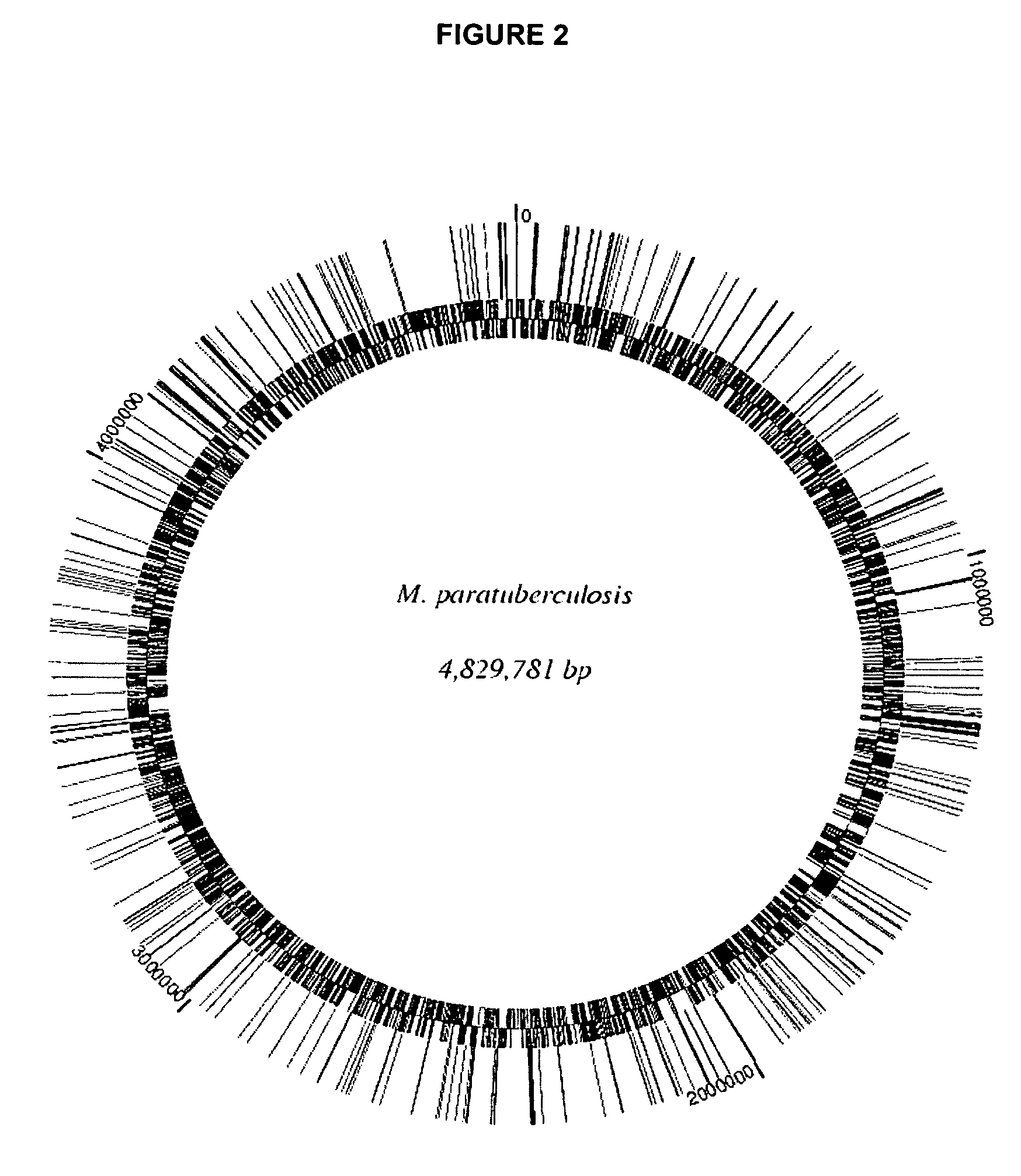Vaccine candidates against Johne's disease
a vaccine candidate and johnes disease technology, applied in the field of nucleic acid sequences, can solve the problems of limited tools available to researchers, poor understanding of the virulence mechanism controlling the persistence of m. paratuberculosis inside the host, and inability to identify the key steps of establishing the presence of paratuberculosis
- Summary
- Abstract
- Description
- Claims
- Application Information
AI Technical Summary
Benefits of technology
Problems solved by technology
Method used
Image
Examples
example 1
Animals
[0133]Groups of BALB / c mice (N=10-20) at 3 to 4 weeks of age were infected with M. paratuberculosis strains using intraperitoneal (IP) injection. Infected mice were sacrificed at 3, 6 and 12 weeks post-infection and their livers, spleens and intestines collected for both histological and bacteriological examinations. Tissue sections collected for histopathology were preserved in 10% neutralized buffer formalin (NBF) before embedding in paraffin, cut into 4-5 μm sections, stained with hematoxylin and eosin (HE) or acid fast staining (AFS). Tissue sections from infected animals were examined by two independent pathologists at 3, 6 and 12 weeks post infection. The severity of inflammatory responses was ranked using a score of 0 to 5 based on lesion size and number per field. Tissues with more than 3 fields containing multiple, large-sized lesions were given a score of 5 using the developed scale.
Bacterial Strains, Cultures and Vectors
[0134]Mycobacterium avium subsp. paratubercul...
example 2
Bacterial Strains
[0191]Mycobacterial isolates (N=34) were collected from different human and domesticated or wildlife animal specimens representing different geographical regions within the USA (Table 6). Mycobacterium avium subsp. paratuberculosis K10 strain, M. avium subsp. avium strain 104 (M. avium 104) and M. intracellulare were obtained from Raul Barletta (University of Nebraska). M. paratuberculosis ATCC19698 and other animal isolates were obtained from the Johne's Testing Center, University of Wisconsin-Madison, while the M. paratuberculosis human isolates were obtained from Saleh Naser (University of Central Florida). All strains were grown in Middlebrook 7H9 broth supplemented with 0.5% glycerol, 0.05% Tween 80 and 10% ADC (2% glucose, 5% BSA fraction V, and 0.85% NaCl) at 37° C. For M. paratuberculosis strains, 2 μg / ml of mycobactin-J (Allied Monitor, Fayette, Mo.) also was added for optimal growth.
[0192]
TABLE 6Mycobacterium strains tested in Example2 of the present inven...
PUM
| Property | Measurement | Unit |
|---|---|---|
| non-permissive temperature | aaaaa | aaaaa |
| weight loss | aaaaa | aaaaa |
| physical characteristics | aaaaa | aaaaa |
Abstract
Description
Claims
Application Information
 Login to View More
Login to View More - R&D
- Intellectual Property
- Life Sciences
- Materials
- Tech Scout
- Unparalleled Data Quality
- Higher Quality Content
- 60% Fewer Hallucinations
Browse by: Latest US Patents, China's latest patents, Technical Efficacy Thesaurus, Application Domain, Technology Topic, Popular Technical Reports.
© 2025 PatSnap. All rights reserved.Legal|Privacy policy|Modern Slavery Act Transparency Statement|Sitemap|About US| Contact US: help@patsnap.com



